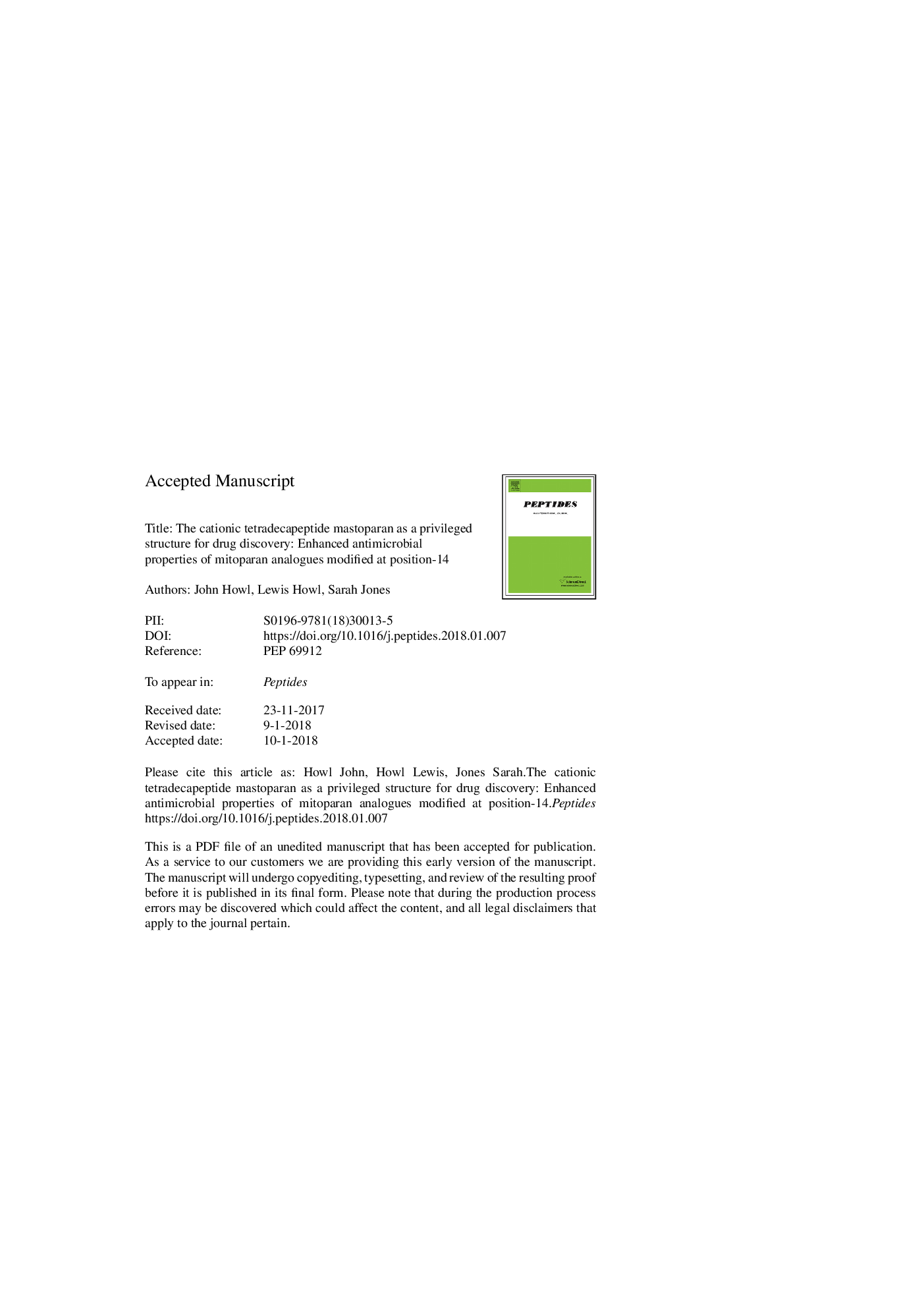| Article ID | Journal | Published Year | Pages | File Type |
|---|---|---|---|---|
| 8347379 | Peptides | 2018 | 49 Pages |
Abstract
Mastoparan (MP) peptides, distributed in insect venoms, induce a local inflammatory response post envenomation. Most endogenous MPs share common structural elements within a tetradecapeptide sequence that adopts an amphipathic helix whilst traversing biological membranes and when bound to an intracellular protein target. Rational modifications to increase cationic charge density and amphipathic helicity engineered mitoparan (MitP), a mitochondriotoxic bioportide and potent secretagogue. Following intracellular translocation, MitP is accreted by mitochondria thus indicating additional utility as an antimicrobial agent. Hence, the objectives of this study were to compare the antimicrobial activities of a structurally diverse set of cationic cell penetrating peptides, including both MP and MitP sequences, and to chemically engineer analogues of MitP for potential therapeutic applications. Herein, we confirm that, like MP, MitP is a privileged structure for the development of antimicrobial peptides active against both prokaryotic and eukaryotic pathogens. Collectively, MitP and target-selective chimeric analogues are broad spectrum antibiotics, with the Gram-negative A. baumannii demonstrating particular susceptibility. Modifications of MitP by amino acid substitution at position-14 produced peptides, Î14MitP analogues, with unique pharmacodynamic properties. One example, [Ser14]MitP, lacks both cytotoxicity against human cell lines and mast cell secretory activity yet retains selective activity against the encapsulated yeast C. neoformans.
Keywords
Related Topics
Life Sciences
Biochemistry, Genetics and Molecular Biology
Biochemistry
Authors
John Howl, Lewis Howl, Sarah Jones,
